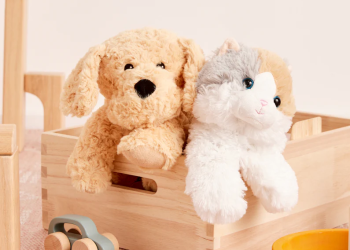Adopting a shy pet can be a rewarding journey, but it requires patience, understanding, and the right approach to help them feel safe and confident in their new environment. Whether your pet’s shyness stems from a lack of socialization, previous trauma, or a naturally timid personality, building trust and fostering a sense of security are key to forming a lasting bond. This guide offers strategies to help you support and nurture your shy adopted pet as they adjust to their new home.
Understanding Shyness in Pets
Causes of Shyness
- Lack of Socialization: Pets that haven’t been exposed to various environments, people, or animals may struggle with fear and uncertainty.
- Previous Trauma: Abuse, neglect, or abandonment can leave lasting emotional scars.
- Genetics: Some breeds or individual animals are naturally more reserved or cautious.
Signs of a Shy Pet
- Hiding or avoiding contact
- Trembling or cowering
- Reluctance to explore their surroundings
- Excessive grooming (cats) or panting (dogs)
- Avoidance of eye contact or sudden movements
Preparing Your Home
Create a Safe Space
- Designate a quiet, low-traffic area where your pet can retreat when they feel overwhelmed.
- Include comfortable bedding, food, water, and toys to make the space inviting.
- Ensure the area is free of hazards like loose wires or small objects that could be swallowed.
Pet-Proof Your Home
- Remove potential stressors, such as loud noises or other pets that may intimidate your new companion.
- Secure windows, doors, and fences to prevent escapes during stressful moments.
Gather Essentials
- For dogs: Leash, collar, food and water bowls, and a comfortable bed.
- For cats: Litter box, scratching post, and hiding spots.
- For small animals: A secure enclosure and species-specific accessories.
The First Few Days
Allow Time to Adjust
- Let your pet explore their new environment at their own pace.
- Avoid overwhelming them with too much attention or activity during the initial days.
Maintain a Calm Environment
- Keep noise levels low and avoid sudden movements.
- Limit interactions with visitors until your pet becomes more comfortable.
Provide Routine and Consistency
- Establish a daily schedule for feeding, playtime, and bathroom breaks to create a sense of security.
Building Trust
Use Positive Reinforcement
- Reward desired behaviors with treats, praise, or toys.
- Avoid punishment, as it can increase fear and hinder trust-building.
Communicate Gently
- Speak in a soft, reassuring tone to avoid startling your pet.
- Use their name frequently to help them associate it with positive experiences.
Respect Boundaries
- Allow your pet to approach you on their terms rather than forcing interaction.
- Gradually increase physical contact, such as petting, as they become more comfortable.
Encouraging Exploration and Confidence
Gradual Exposure
- Introduce new areas of your home one at a time to prevent overwhelming your pet.
- Supervise their exploration and provide encouragement with treats or praise.
Interactive Play
- Use toys to engage your pet and build positive associations with their environment.
- For cats, try feather wands or laser pointers; for dogs, use fetch toys or tug ropes.
Socialization
- Slowly expose your pet to new people, animals, and environments in controlled settings.
- Monitor their reactions and adjust the pace as needed to prevent stress.
Addressing Specific Challenges
Fear of People
- Encourage visitors to remain calm and avoid direct eye contact, which can be intimidating.
- Allow your pet to initiate interactions rather than forcing contact.
- Reward positive interactions with treats or gentle praise.
Fear of Other Pets
- Conduct introductions gradually, starting with scent swapping or separated visual contact.
- Supervise initial face-to-face meetings and separate the pets if tension arises.
- Provide individual resources, such as food bowls and sleeping areas, to prevent competition.
Sensitivity to Sounds
- Minimize exposure to loud noises, such as vacuum cleaners or thunderstorms.
- Use white noise machines or calming music to create a soothing environment.
Monitoring Progress
Observe Body Language
- Watch for signs of relaxation, such as a wagging tail (dogs), slow blinking (cats), or exploring their surroundings.
- Note triggers that cause fear or stress and work to minimize them.
Celebrate Small Victories
- Acknowledge and reward progress, no matter how minor, to encourage continued improvement.
Be Patient
- Understand that building trust takes time, especially for pets with a history of trauma or neglect.
Seeking Professional Help
When to Consult a Trainer or Behaviorist
- Persistent aggression or extreme fear that doesn’t improve with time and effort.
- Difficulty in managing specific behaviors, such as excessive barking or destructive chewing.
Veterinary Support
- Schedule a check-up to rule out medical conditions that may contribute to shyness or behavioral issues.
- Discuss calming supplements or medications if your pet’s anxiety is severe.
Long-Term Strategies for Bonding
Routine Enrichment
- Provide mental stimulation through puzzle feeders, training exercises, and interactive toys.
- Rotate toys and activities to keep your pet engaged.
Regular Exercise
- Physical activity helps reduce stress and boosts confidence.
- Tailor exercise routines to your pet’s energy level and preferences.
Strengthen the Bond
- Spend quality time with your pet through shared activities like walks, grooming, or quiet companionship.
- Be consistent in your interactions to reinforce trust and reliability.
Helping a shy adopted pet feel at home is a journey that requires dedication and compassion. With patience, understanding, and the right approach, you can create a safe, loving environment where your pet can thrive and develop a strong bond with you.












